Do you struggle to maintain a regular exercise routine that actually sticks long-term? Many people start fitness programs with enthusiasm but lose motivation within just a few weeks.
A yoga challenge provides a clear plan and daily motivation to help you stay committed. You can start with just ten minutes per day and build from there.
These programs are suitable for both complete beginners and experienced practitioners. I’ll guide you through different challenge lengths and formats available.
You’ll learn how to pick the right one for your lifestyle and goals. No gym membership or fancy equipment required for most challenges. Your living room instantly becomes your personal yoga studio.
Why You Should Try a Yoga Challenge Program?
Taking on a yoga challenge can alter your practice and create positive habits that stick. You commit to showing up on your mat every single day for a set period. This builds real discipline that carries over into other parts of your life.
Your body gets stronger and more flexible through daily practice. Your posture improves from consistent alignment work. Regular movement helps naturally reduce daily stress and anxiety.
Yoga challenges also boost your mindfulness and present-moment awareness. You learn to focus more effectively and remain calm under pressure.
Many challenges include online communities where you can share progress with others. This accountability keeps you motivated when you feel like skipping a day.
Different Yoga Challenge Formats to Try
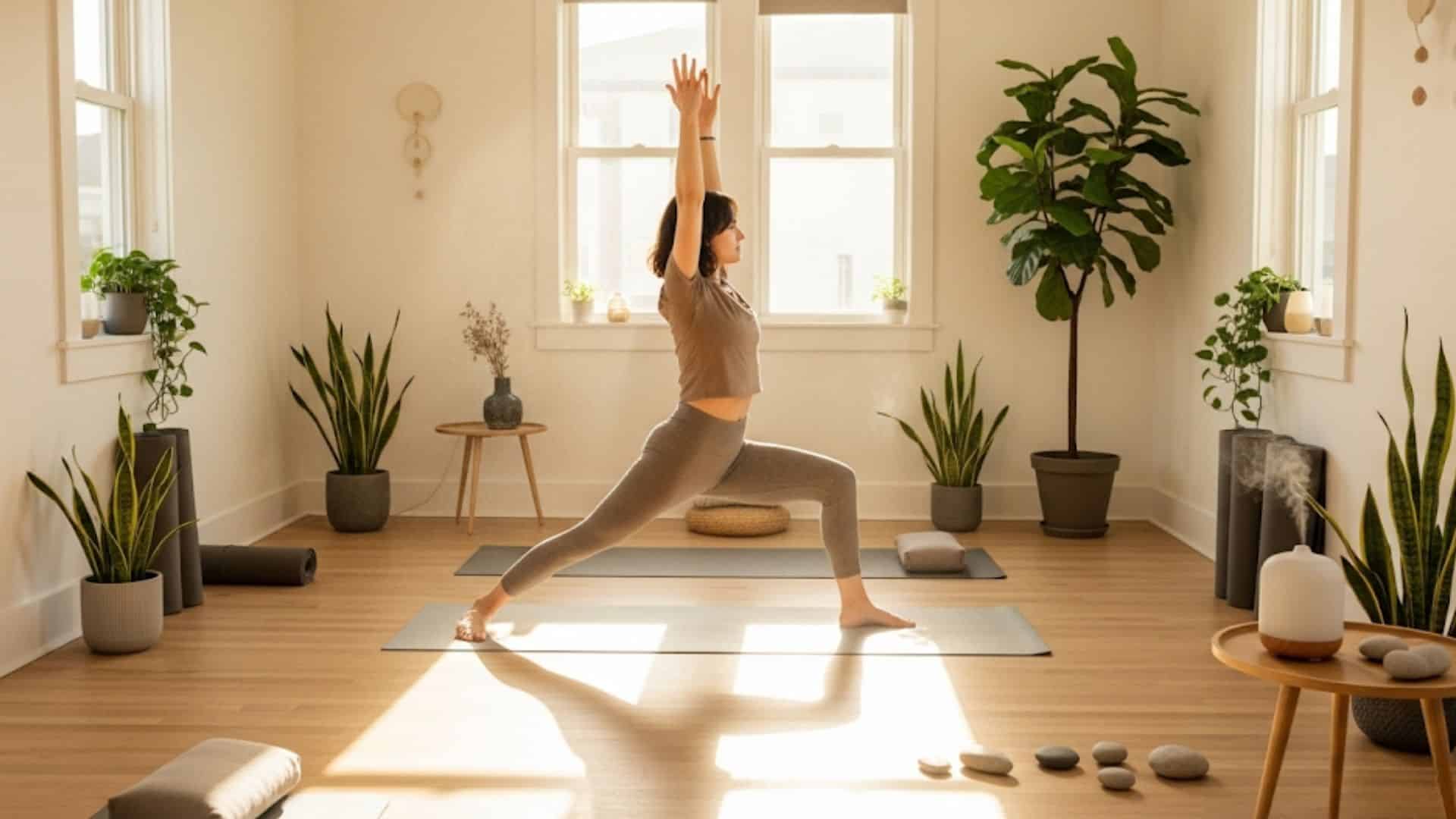
I recommend choosing a yoga challenge length that matches your current schedule and experience level. Different formats offer unique benefits and help you build sustainable practice habits:
7-Day Yoga Challenge
This challenge is great for beginners who want to build a daily yoga habit. You will do simple stretches and poses for about 10 to 20 minutes each day.
The routine is easy to follow and helps improve your flexibility and strength. It also helps reduce stress and makes you feel calm.
Best for: Beginners and Busy professionals
14-Day Yoga Challenge
This two-week challenge is designed to help you build strength and improve flexibility. The exercises become a bit more challenging, but still easy to manage.
It fits well for people who have little time but want steady progress. You’ll start feeling stronger and more balanced after completing this challenge.
Best for: Beginners and Busy professionals
28-Day Yoga Challenge
This month-long challenge helps build a lasting yoga habit and targets full-body fitness. It is often used for weight loss or a body reset.
You will practice every day, focusing on different body parts. It encourages commitment and rewards you with mental clarity and better health.
Best for: Busy professionals, families, or kids
30-Day Yoga Challenge
This is a popular full-month yoga challenge featuring weekly themes such as strength, balance, and relaxation. It offers a clear structure and helps build a strong habit.
The challenge suits individuals seeking genuine, lasting improvements in both body and mind, with a guided plan.
Best for: Busy professionals and Beginners
Where to Join Structured Yoga Challenges?
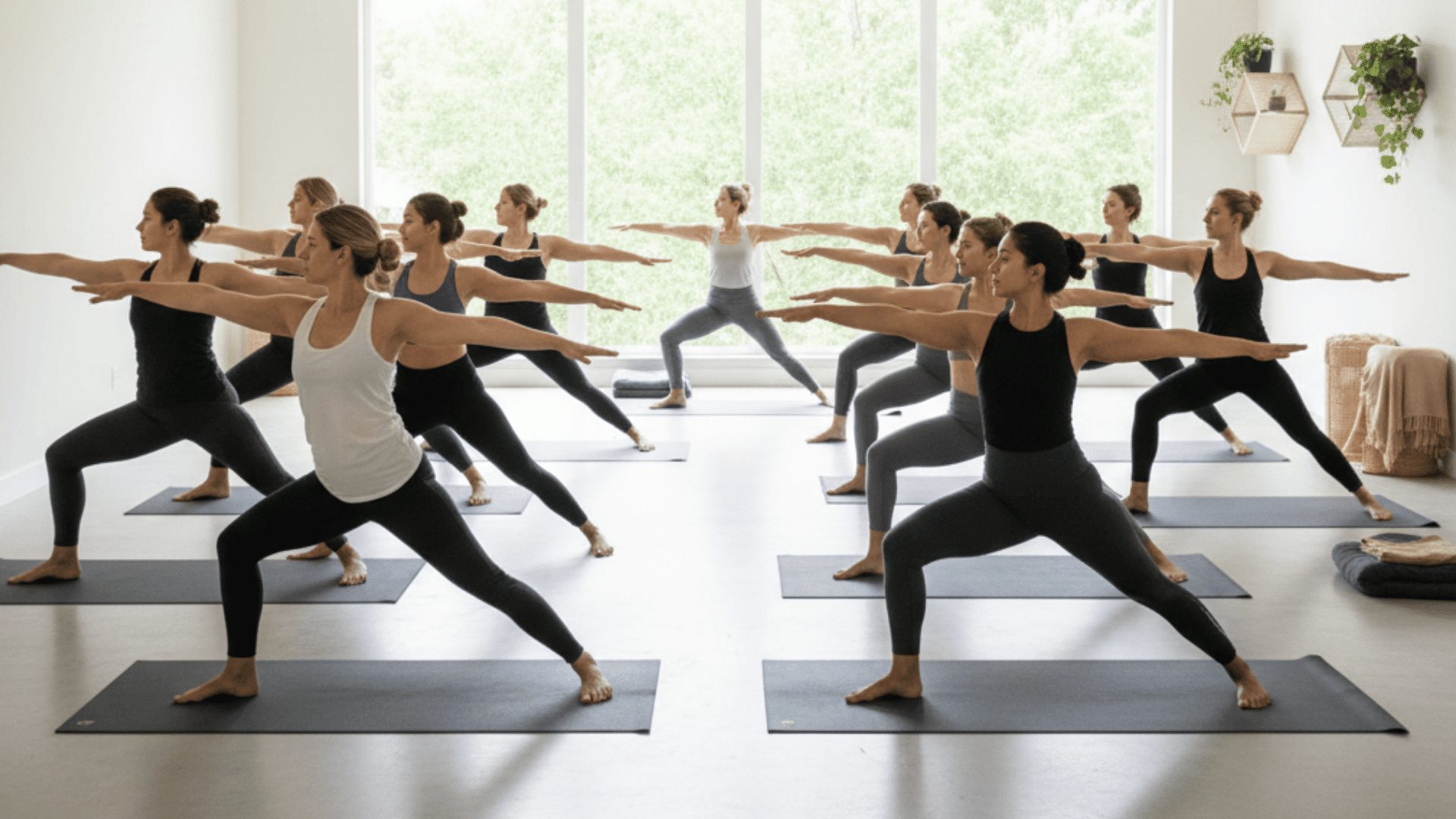
Joining a structured yoga challenge can help you stay motivated and build a daily habit. Here are some good options to get started:
Online Yoga Challenge Platforms
Online yoga challenges are easy to join and fit your schedule. They usually offer videos and guides to help you along. Here are some popular ones:
- Yoga With Adriene’s 30-Day Challenge is free, lasts 30 days, and has daily videos with clear instructions.
- Alo Moves costs about $20/month and offers diverse classes, including 30-day challenges with guided sequences.
- DoYogaWithMe has free and paid options, featuring video classes and printable calendars for tracking progress.
- DailyOM offers affordable challenges with videos and supportive emails, often including meditation along with yoga.
These online platforms provide everything needed for your yoga experience, whether from home or on the go.
Local Yoga Studios and Community Classes
Local studios and community centers often run 21- or 30-day yoga challenges. It’s a great way to meet others and practice together. Here are some of the places you can try:
- CorePower Yoga offers studio challenges in many cities, good for all skill levels; check pricing locally.
- Many YMCA centers run affordable yoga challenges that suit beginners and community members.
- Boutique studios like YogaWorks host monthly challenges with small class sizes and personal attention.
- Check your local community centers; they often have low-cost yoga classes and seasonal challenges.
Remember to ask about cost, timing, and class level so you pick the best fit for you. These options make it easy to join a challenge near you and stay committed to your practice.
30-Day Yoga Challenge Schedule Breakdown
A structured 30-day yoga challenge helps you build consistent practice while gradually developing strength, flexibility, and mindfulness.
Each week focuses on different skills that build upon previous lessons for steady progress:
Week 1: Foundations (poses + breathwork)
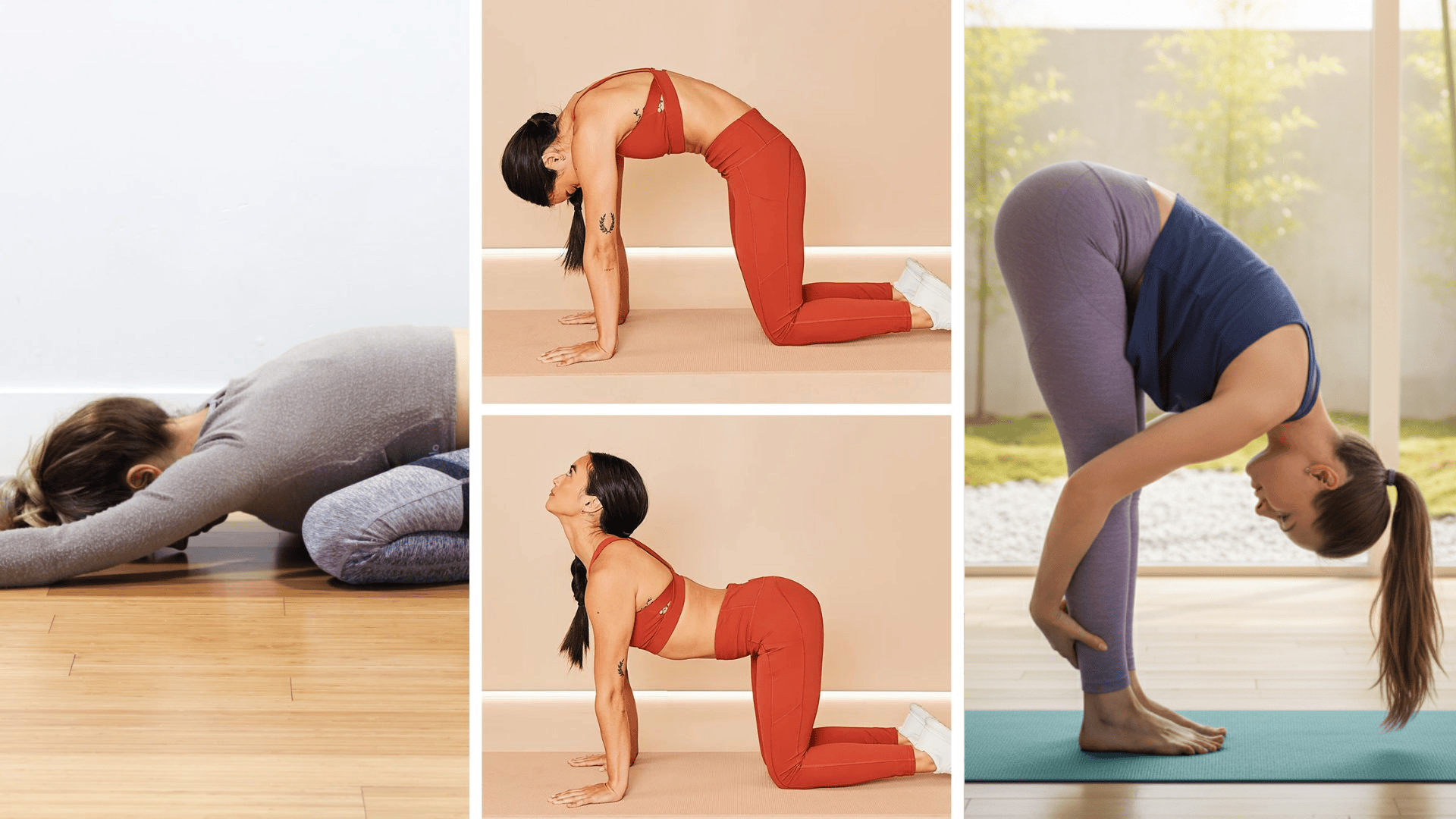
During your first week, you’ll learn basic poses and breathing techniques that form the foundation of yoga practice.
Your body will start to feel less stiff as you gently stretch tight muscles. You may notice an improvement in sleep quality and a reduction in tension in your shoulders and neck.
Focus on proper alignment rather than perfect poses. These basic skills will help you build confidence and prepare for more challenging weeks ahead:
| Day | Pose Focus | Breathing Focus |
|---|---|---|
| 1-2 | Mountain Pose, Child’s Pose | Deep belly breathing |
| 3-4 | Cat-Cow, Downward Dog | Breath awareness |
| 5-7 | Standing Forward Fold, Seated Twist | Coordinated breath and movement |
These foundational elements create a strong base for your yoga experience. Week two will build on these skills with more strength-focused movements.
Week 2: Core & Strength
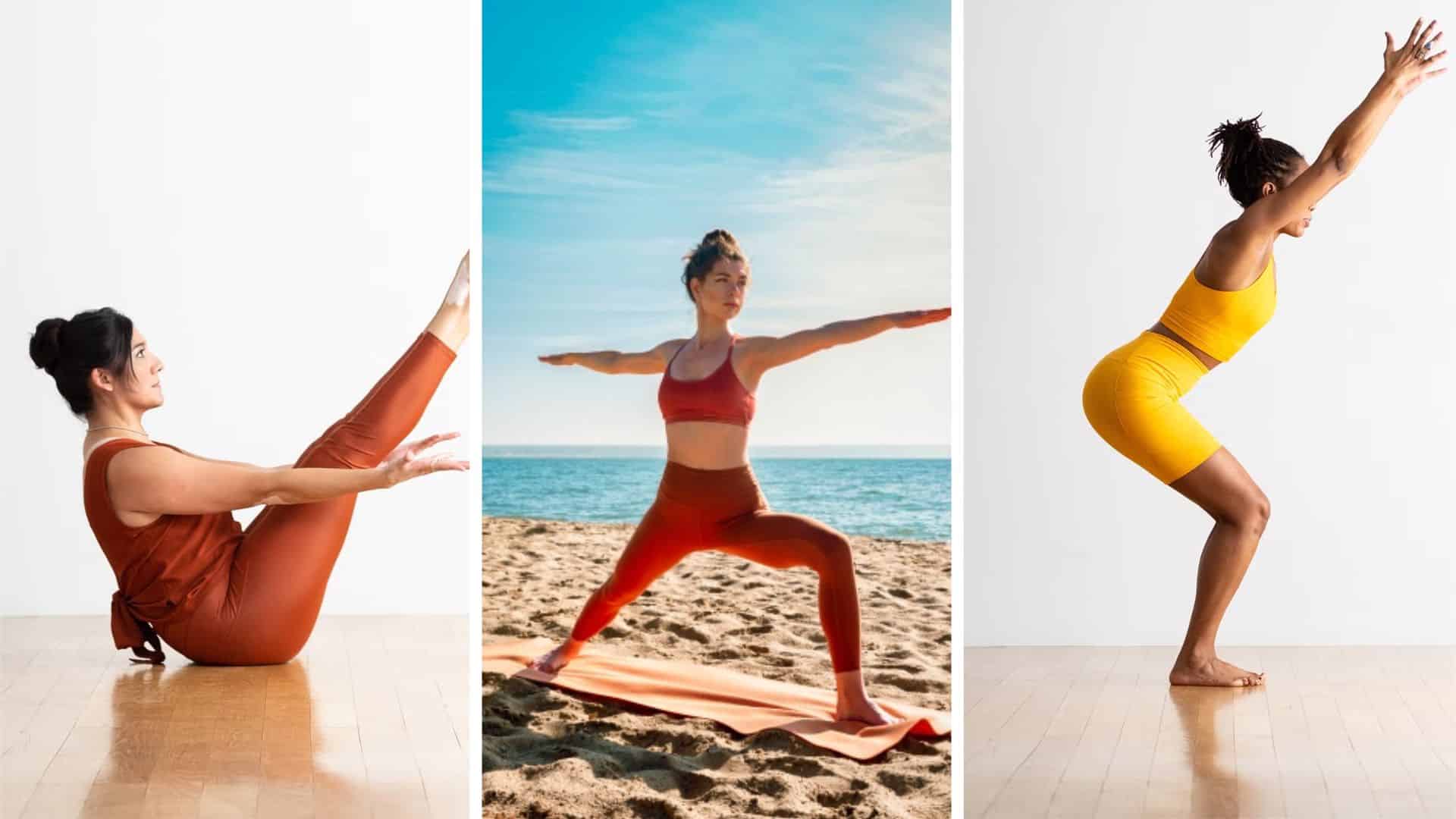
Your second week focuses on building core stability and overall body strength through targeted poses. You’ll start feeling stronger in your midsection and notice better posture throughout the day.
Your arms and legs will begin developing more muscle tone and endurance. Some poses may feel challenging, but this builds resilience.
This week emphasizes poses that strengthen your core muscles and build overall body power. These movements will help you feel more stable and confident in your daily activities:
| Day | Pose Focus | Strength Target |
|---|---|---|
| 8-10 | Plank variations, Boat Pose | Core muscles |
| 11-12 | Warrior poses, Chair Pose | Legs and glutes |
| 13-14 | Chaturanga, Side Plank | Arms and shoulders |
These strength-building poses will make everyday activities feel easier and more manageable. Week three shifts focus on improving flexibility and balance skills.
Week 3: Flexibility & Balance
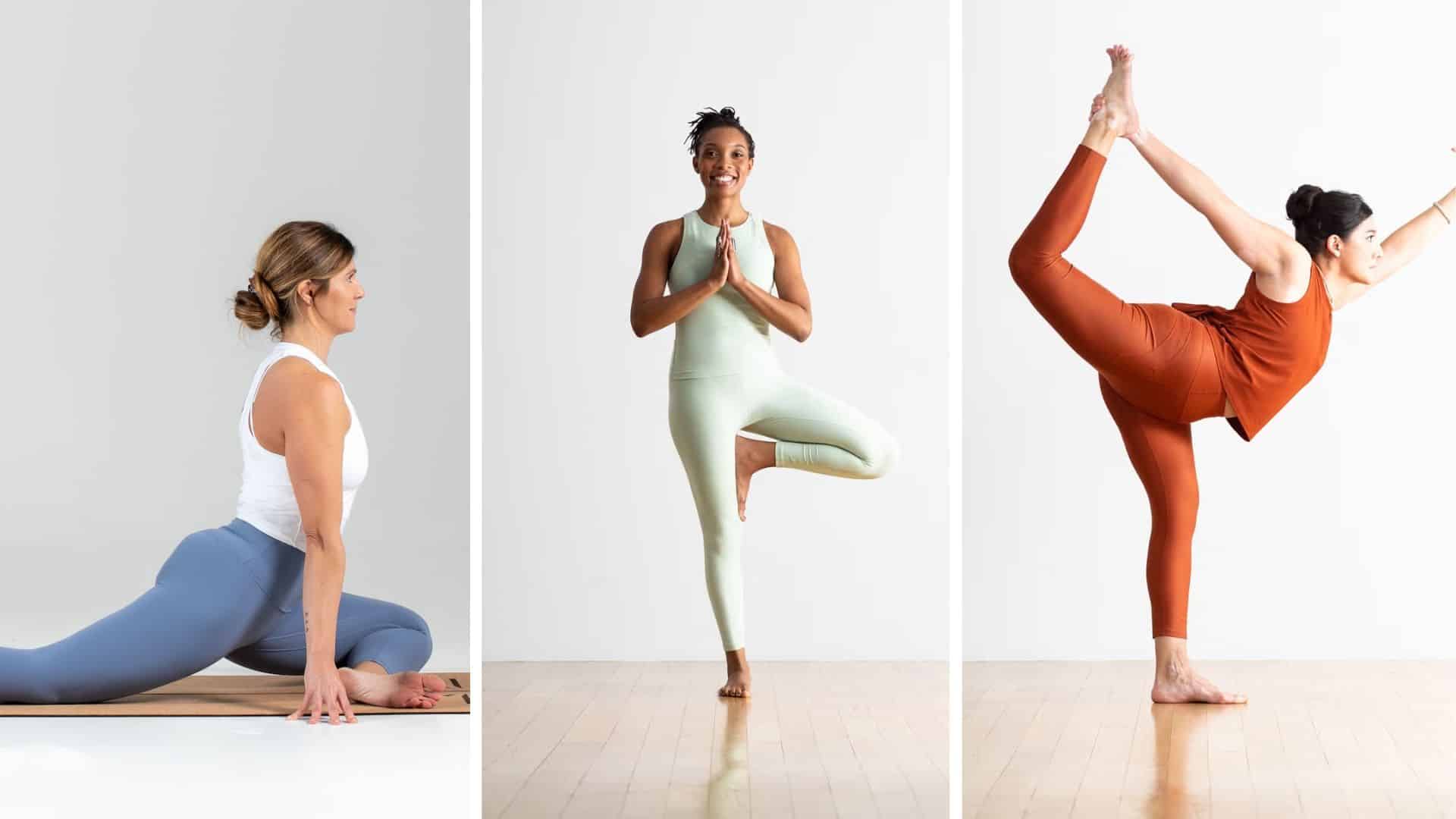
Week three emphasizes stretching tight areas and improving your balance through challenging poses. Your flexibility will noticeably increase, especially in your hips and hamstrings.
You’ll feel more graceful and coordinated in your movements. Balance poses help strengthen small stabilizing muscles throughout your body.
Mental focus improves as you concentrate on staying steady. This week targets areas that often feel tight from daily activities and sitting. These poses will help you move more freely and feel less restricted in your body:
| Day | Pose Focus | Target Area |
|---|---|---|
| 15-17 | Hip openers, Pigeon Pose | Hips and lower back |
| 18-19 | Tree Pose, Dancer Pose | Balance and coordination |
| 20-21 | Forward folds, Seated stretches | Hamstrings and spine |
Your body will feel more open and mobile after completing this flexibility-focused week. The final week brings everything together with mindfulness and relaxation practices.
Week 4: Mindfulness & Relaxation
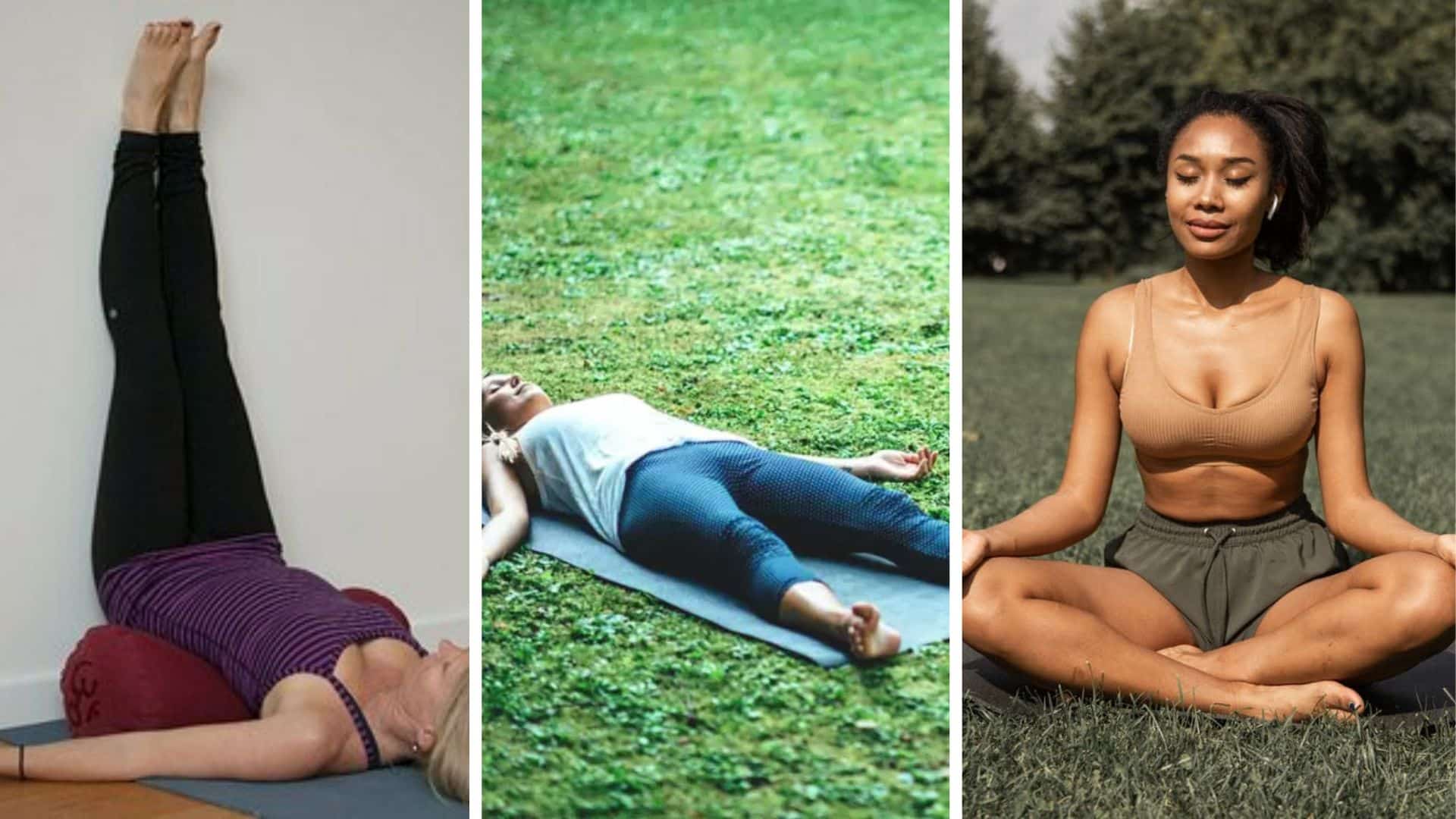
Your final week combines gentle movement with meditation and deep relaxation techniques. Stress levels will decrease significantly as you learn to calm your mind and body. Sleep quality often improves dramatically during this week.
You’ll develop better emotional regulation and feel more centered throughout challenging situations. Mental clarity increases as you practice staying present.
This week focuses on calming practices that help you manage stress and find inner peace. These techniques will serve you long after the challenge ends:
| Day | Pose Focus | Mindfulness Element |
|---|---|---|
| 22-24 | Gentle twists, Legs up the wall | Stress relief meditation |
| 25-27 | Yin poses, Supported stretches | Body scan relaxation |
| 28-30 | Savasana variations, Breathing exercises | Present moment awareness |
These final practices help you integrate everything you’ve learned throughout the month. You’ll finish the challenge feeling stronger, more flexible, and mentally balanced.
How to Start and Stay on Track?
Starting a yoga challenge successfully requires planning and the right mindset for your experience. These simple steps help you set yourself up for success from day one:
- Pick a challenge that matches your current fitness level and available time commitment
- Set up a quiet space at home with a yoga mat and any props you might need
- Download helpful apps or find online videos that provide clear instructions and guidance
- Create a simple tracking system using a journal or calendar to mark completed sessions
- Schedule your practice time like an important appointment that you cannot miss or skip
Following these steps creates a solid foundation for completing your entire challenge successfully.
Common Mistakes to Avoid During a Yoga Challenge
Many people make simple mistakes that can derail their yoga challenge progress or lead to injury. Avoiding these common errors helps you complete your challenge safely and successfully:
- Skipping warm-ups: Jumping into poses without preparing your muscles can cause strains and injuries
- Overstretching: Pushing too hard, too fast, can damage muscles and set back your progress significantly
- Quitting after missing a day: One missed session doesn’t ruin everything, so just continue the next day
- Not listening to your body: Ignoring pain or fatigue signals can lead to serious injuries and burnout
These mistakes are easy to avoid when you stay mindful and patient with yourself. Remember that yoga challenges should improve your health, not create stress or physical problems.
Final Thoughts
A yoga challenge can completely change how you approach fitness and stress management in your daily life. You now have all the tools needed to pick the right challenge length and format.
Remember to start slowly and listen to your body throughout the entire process. Missing one day doesn’t mean failure, so just get back on track immediately.
Focus on building the habit rather than achieving perfect poses every single time. Your body and mind will thank you for making this healthy commitment to yourself.
The most important step is simply beginning today rather than waiting for tomorrow. Please drop a comment below to let me know which yoga challenge format caught your attention the most!





